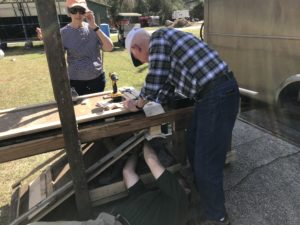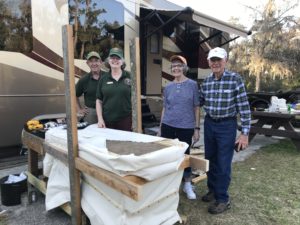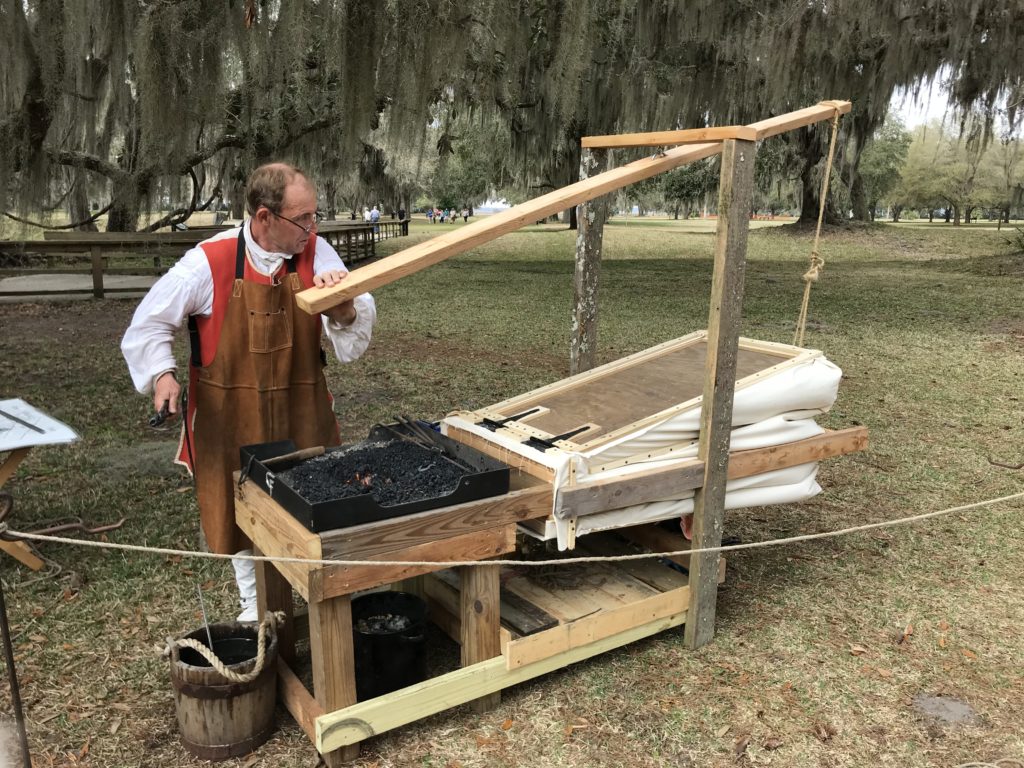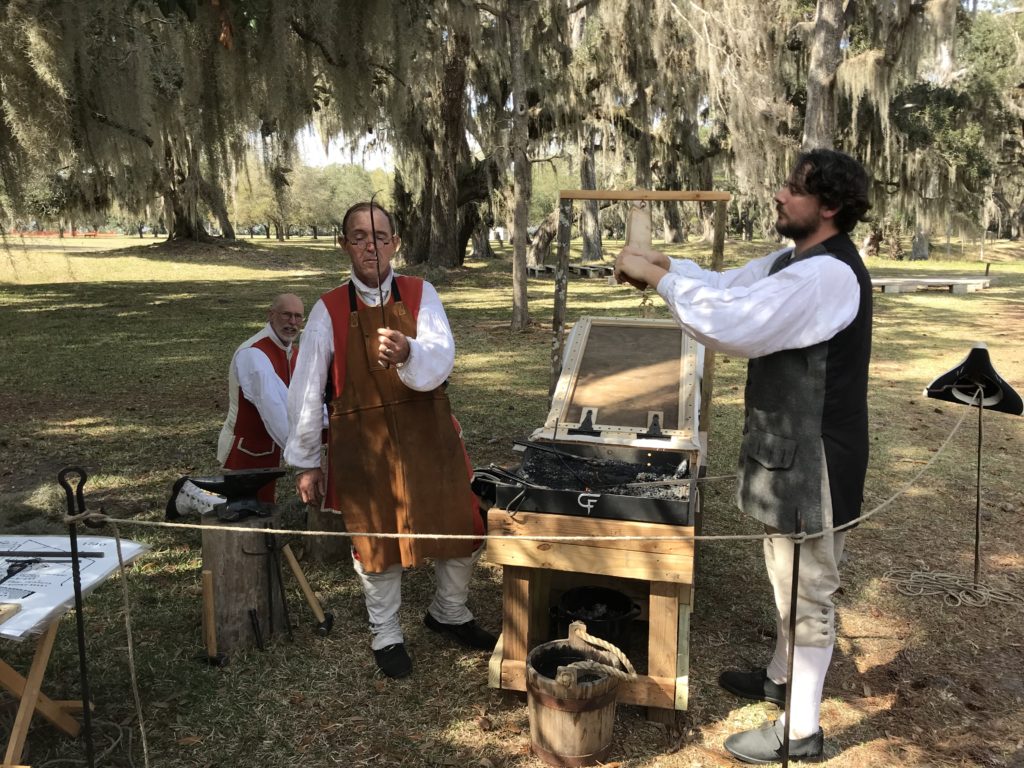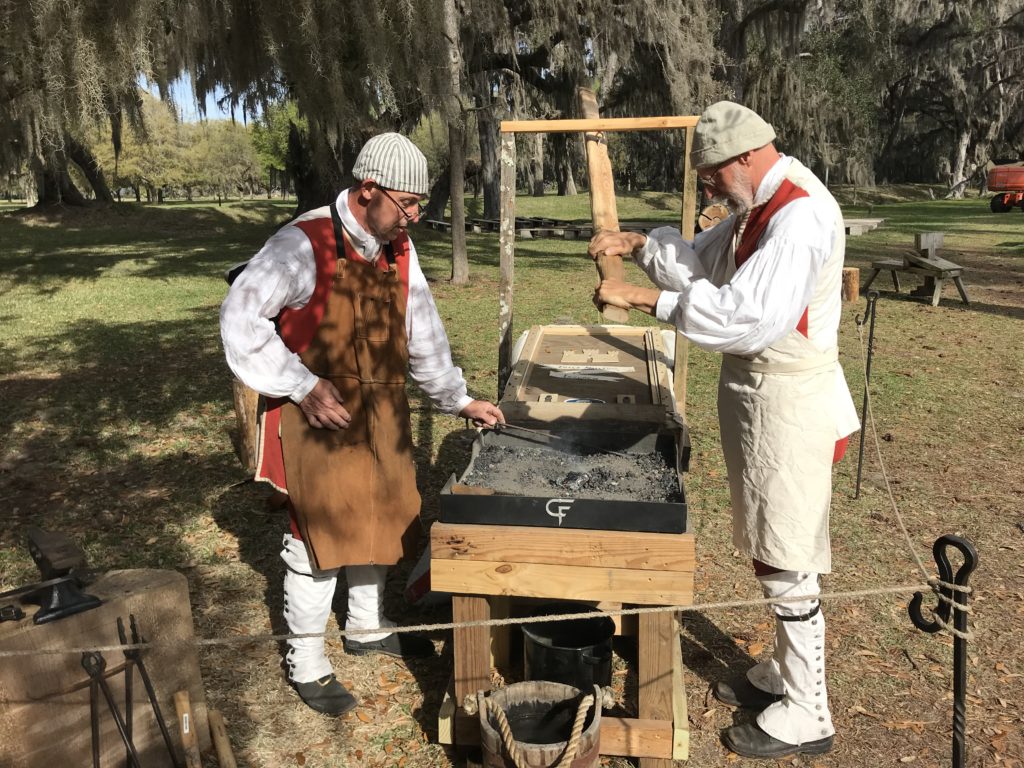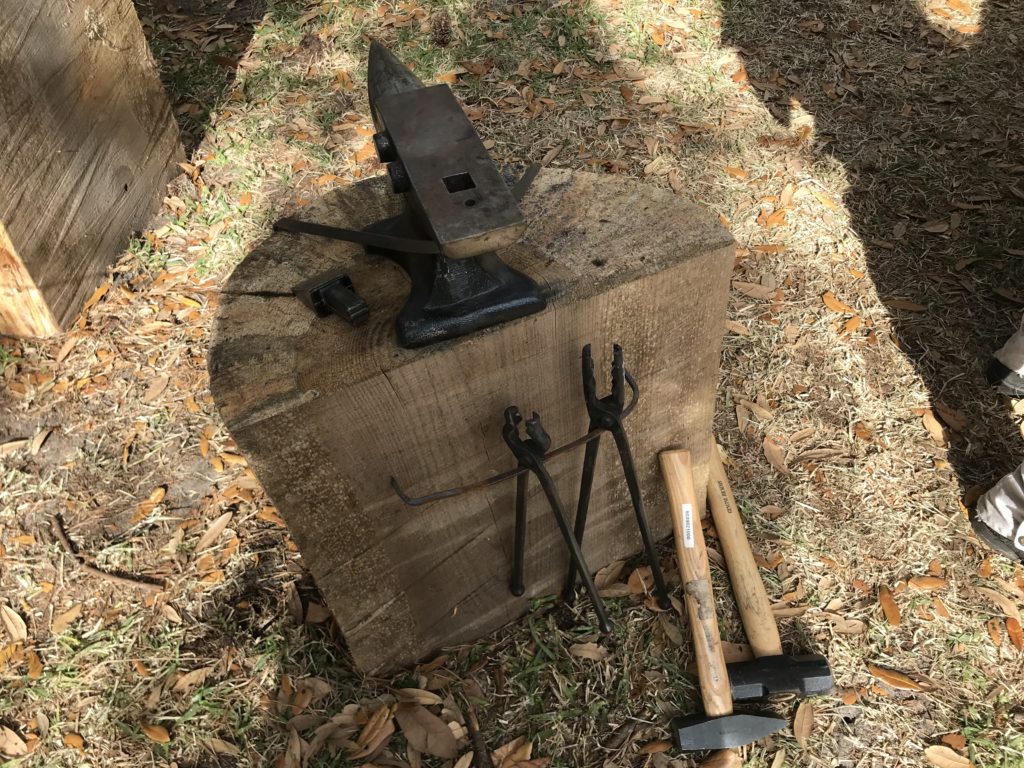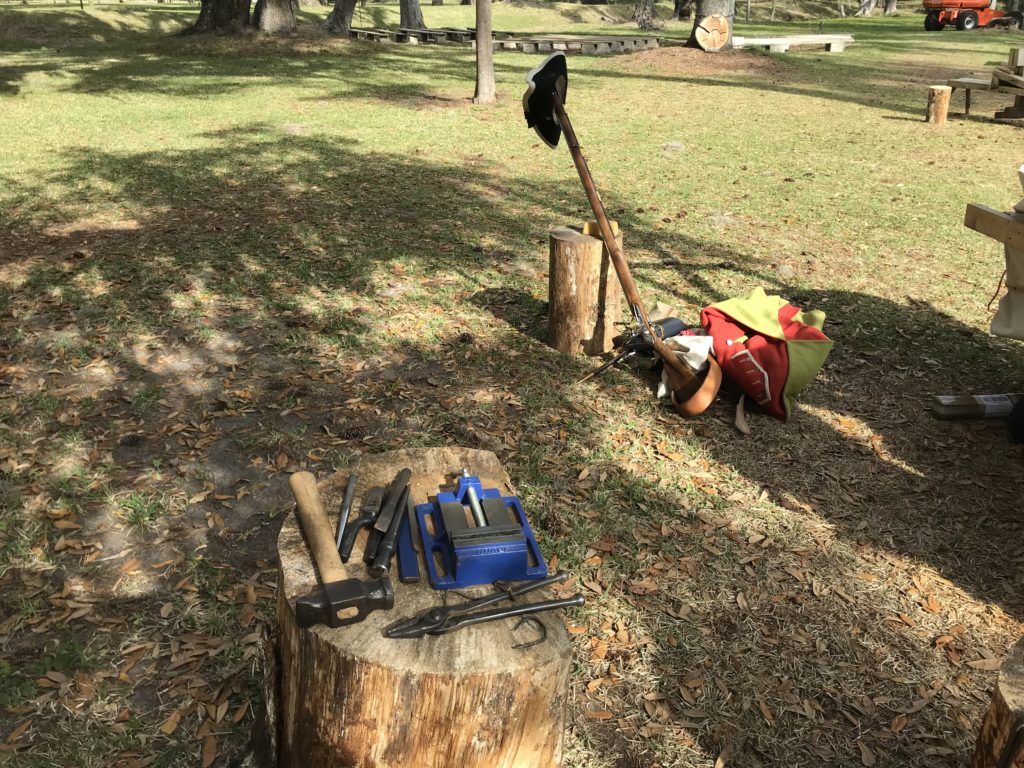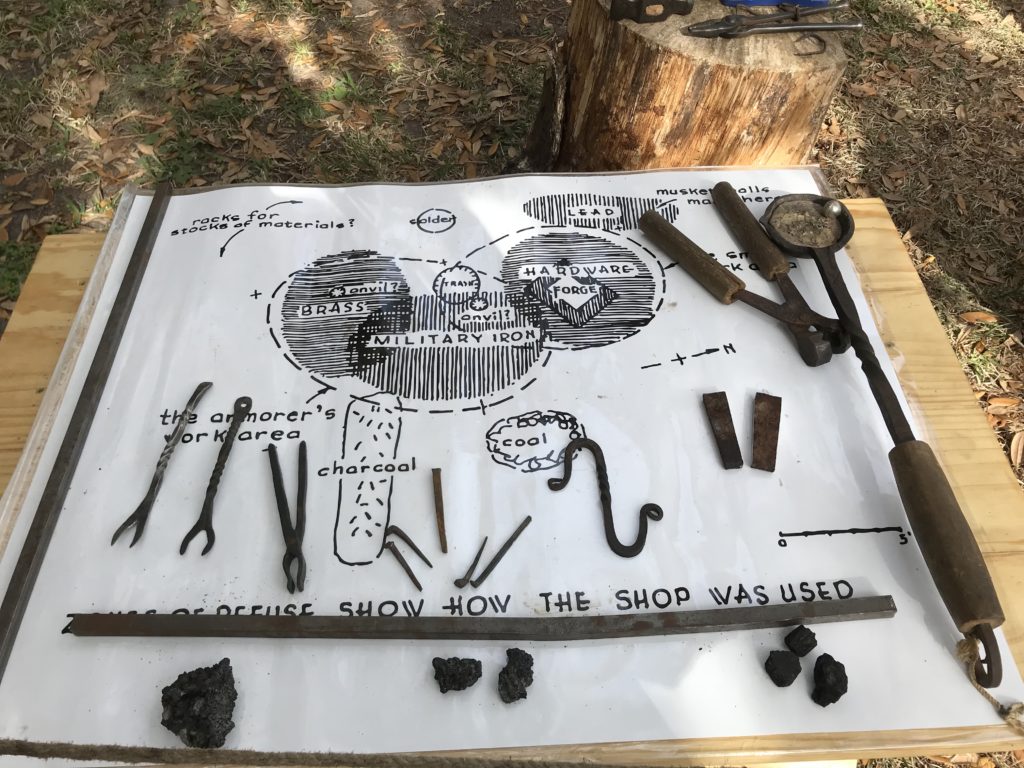When Tom was at San Juan Island, English Camp, he learned how to do some blacksmithing. Actually, he already knew about it because his father had a forge, but he learned how to do it with living history. Fort Frederica had a blacksmith and our Integrated Resouce Manager (Ranger Michael, our boss) wanted to have a blacksmith demonstration here. So he and Tom talked and planned (plotted) and purchased a forge.
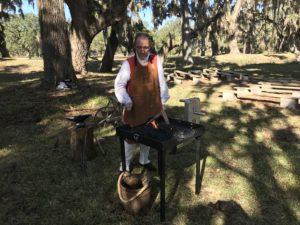
The problem, of course, is that a recently purchased forge does not look like something a blacksmith would have used back in the 1740’s. They bought a Centaur Handy Forge with a hand-cranked blower and Tom used it for a couple of weeks. Then he started 18th century-fying it.
Tom put a wooden frame around the metal Centaur forge and added a shelf at the bottom for carrying tools. He added some wheels scavenged from an old lawn mower because the forge has to be put away each night. After using it like this and doing some research, Tom designed and built double-lung accordion bellows.
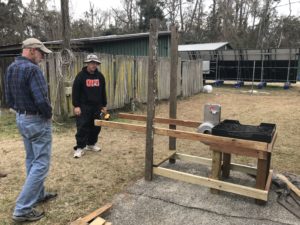
The hand-pumped bellows was the biggest job, requiring assistance from just about every person who works here at Fort Frederica. Most bellows are made out of leather, but leather was too expensive. So Tom bought some heavy canvas from Big Duck Canvas Warehouse. He used some plywood donated by the maintenance staff and scavenged some other wood for supports. Maintenance volunteers Bob and Denise were a big help in finding the parts he needed. My dad found some screws that looked like antique fasteners to hold everything together for the finishing touch.
Time was the biggest problem with constructing the bellows. Once the hand-cranked blower came off, the forge couldn’t be used again until the bellows were finished. So Tom had less than a week to build the bellows. Mom and Dad spent a long afternoon battling sand gnats and following Tom’s instructions. At one point we had 14 hands on the bellows holding the canvas in place while Tom screwed the fasteners in place. We worked until sundown for three days straight building the bellows.
Tom got the bellows finished before our next living history day. He attached the spring bar, which pumps the bellows, and was in business the next living history day.
Blacksmithing is a big attraction in living history. People love to see the blacksmith working at the forge and making stuff from glowing metal. Tom enjoys talking to them and sharing his knowledge. He makes “turn-screws” and hooks to sell in the bookstore here at Fort Frederica. I know Tom wishes Fort Frederica had a permanent blacksmith forge, but until they do, his modified forge works great.

